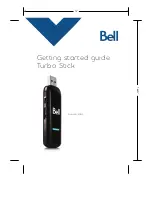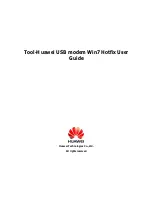
Quantum and Evolution Series Installation and Operating Handbook
10-4
Min
Req
Signal Description
HSSI
Name
50 pin
Electrical
Levels
9
Clock Out
RT 2
27
ECL
9
Data Out
RD 4
29
ECL
9
Signal Ground
SG 1
26
Ground
9
DCE Available
CA
3
28
ECL
COMMON LINES
9
Signal Ground
SG 13
38
Ground
9
Signal Ground
SG 19
44
Ground
Loopback Circuit A
LA
10
35
ECL
Loopback Circuit B
LB
12
37
ECL
Loopback Circuit C
LC
5
30
ECL
The modem can operate at high data rates using the HSSI interface, but the maximum
useable data rate is limited by the connecting cable length. The maximum data rate
is
10Mbps over a 10m cable (over good quality twisted pair screened cable), but this rate is
reduced as the connecting cables extend beyond 10m. As an estimate, assume the
maximum rate halves as the distance doubles (e.g. 5Mbps to 20m, 2.5Mbps to 40m, etc).
Similarly, the maximum data rate increases as the connecting cable length is reduced (i.e.
20Mbps to 5m, 40Mbps to 2.5m).
The input clock/data phase is selected automatically, reporting a
Data Marginal
warning
whenever it has to switch phase. If the modem reports
Data Marginal
frequently then this is
not a modem fault but an indication that there is a clocking problem external to the modem
(i.e. changing clock/data phase, a problem which would otherwise have caused untraceable
data errors). With the Tx Clocking Set to
Tx Clock In
the
Data In
signal is checked against
the
Clock In
signal. With the Tx Clocking Set to
Internal
or
Rx
the
Data In
signal is checked
against the
Int` Tx Clk Out
signal.
All signals are balanced, differentially driven and received at standard ECL levels. The
loopbacks LA and LB provided are direct supersets of the EIA signals LL (Local Loopback)
and RL (Remote Loopback) Loopback LC is an optional request signal from DCE to DTE,
to request that the DTE provides a loopback path to the DCE.
By selecting
Advanced
it is possible to configure the modem to raise an alarm if either the
Sig` Valid In
line (RS) or
Device (DTE) Ready In
line (TR) switch to the inactive state. It is
also possible to configure the Tx carrier to be switched on and off by the
Sig= Valid In
line
(RS) by selecting
Edit
,
Tx
,
Carrier
,
RTS enabled
.
Please note: Although the HSSI cable uses the same connector as the SCSI-2
specification, the cable impedances of HSSI and SCSI-2 cables are different. SCSI-2
cables can be as low as 70 Ohms, whereas HSSI cables are specified at 110 Ohms. As a
result, cables made to SCSI-2 specifications may not work correctly with HSSI.
Incompatibilities will be more apparent with longer cable lengths.
















































